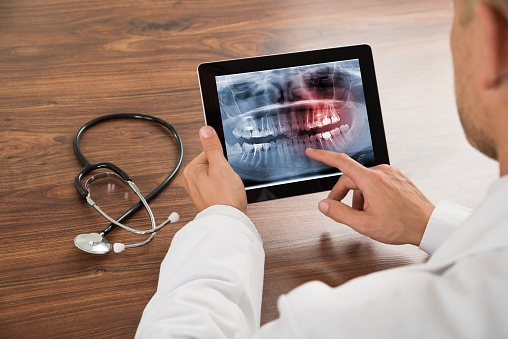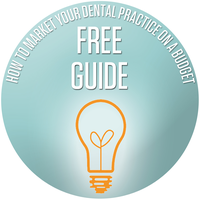
Teledentistry can open a new world for you and your patients.
Teledentistry is changing the way dental care is delivered. It allows dentists to diagnose and treat patients remotely. Patients can receive effective treatment plans even if their dentist is not in the same room. This innovative approach to dental care helps people get the treatment they need, no matter where they are.
Key Takeaways:
- You can reach out to patients who might have avoided the dental office because of their fears or worries.
- Getting dental services becomes more accessible for people who struggle with prohibitive costs and travel barriers.
- Patients can get advice on keeping their teeth and gums healthy.
- Telehealth is useful for dental emergencies, planning treatment, and research projects.
Let's talk about the advantages of adding teledentistry to your dental practice. Teledentistry can help you reach more people and make it easier for patients to get dental care when it's needed most.
What is teledentistry?
Teledentistry describes a method of delivering dental care. It is not a specific service. It involves a dental professional using telehealth systems to provide medical, health, and education services.
Telehealth visits became commonplace during the COVID-19 public health emergency. However, technology has existed for almost 10 years. Teledentistry can take many forms, including:
- Live video: Two-way interaction between a patient and dentist.
- Store and forward: This includes recorded health information like X-rays, photos, and videos. Records can be sent to a dentist, who reviews the condition for diagnosis and treatment recommendations.
- Remote patient monitoring: Personal health and medical information is collected in one location and shared electronically with providers in another setting for further care.
Can teledentistry expand your practice?
Access to dental care is a significant issue. The CDC reports that nearly 40% of adults in the US do not receive dental care.
Recent advancements have allowed dental providers to offer top-notch care to more patients in real-time. Telehealth has transformed the way oral healthcare gets delivered in the following ways:
- Oral health emergencies: Virtual dental visits are available 24/7, which saves patients time and money. They allow patients to communicate directly with dentists and receive prompt responses.
- Oral health education: Teledentistry helps patients detect and prevent oral health issues early without physically visiting a dentist. This helps avoid expensive hospital-based treatments and procedures. It's also a helpful option for patients with health or mobility issues who need access to oral health care.
- Diagnosis and treatment planning: Dentists can use teledentistry to communicate with other professionals. It can be used for diagnosing, treatment plans, and further patient care. This technology also makes it easier to talk with dental labs.
- Research projects and forensic dentistry: Dental professionals can save patient information for research, even forensic dentistry.
How dental hygienists fit into teledentistry.
Some states have made new rules that allow dental hygienists to complete procedures without a supervising dentist. This includes temporary fillings.
Therefore, dental hygienists can help patients remotely and refer them to a dentist if more treatment is needed.
There are currently over 10 states with extensive teledentistry regulations. They include California, New York, Ohio, and Tennessee. Other states have limited or no teledentistry regulations.
Working with insurance for teledentistry benefits.
Private insurers and government programs are increasingly paying for virtual dental services. The ADA has two teledentistry codes based on the services provided (D9995 and D9996). Here is a breakdown of the service delivery types:
- Synchronous services: Uses a secure video conferencing platform, like Zoom, for live dental care. Dentists can conduct visual exams, gather patient information, and address concerns in real-time.
- Asynchronous services: Sending health information to a dental provider for non-real-time treatments. This allows providers to share confidential information like X-rays, digital impressions, or photos for remote treatments. Many remote orthodontic providers use this method.
- Remote patient monitoring (RPM): Dentists can take digital scans or impressions of the mouth with a smartphone or electronic device. This allows providers to review the information and update a treatment plan without needing in-person visits.
- Mobile health (mHealth): Mobile devices such as tablets and personal digital assistants (PDAs) can be valuable resources for educating people about healthcare and public health practices.
What is the future of teledentistry?
Looking ahead, the demand for convenient and top-notch dental services will keep fueling the expansion of teledentistry.
If you're planning to implement a teledentistry program, it's important to familiarize yourself with the basics. This includes researching various software options and understanding state regulations. Also, make sure your staff is educated on the subject.
Before starting teledentistry, connect with other providers who offer this service. They can provide valuable insights on what to expect. And it's important to talk to your patients to see if they are interested in and comfortable with getting dental services remotely.
With the expanding capabilities of teledentistry, there is now a greater potential to grow your practice. This also means that patients will have more options for their dental care. It all leads to better outcomes.
Want to join the Solstice network?
Connect with our dedicated provider relations team for more information about joining our network. You can call 1.877.760.2247 or email providerrelations@solsticebenefits.com.
Already in the Solstice network?
Search to see if you're part of the Solstice dental PPO or HMO network. You can also go to https://www.mysolstice.net/ or call us at 1.877.760.2247.



